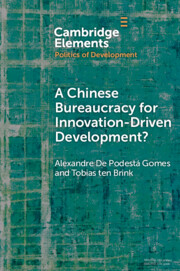Element contents
A Chinese Bureaucracy for Innovation-Driven Development?
Published online by Cambridge University Press: 25 August 2023
Summary
- Type
- Element
- Information
- Online ISBN: 9781108975902Publisher: Cambridge University PressPrint publication: 21 September 2023
References
- 4
- Cited by

